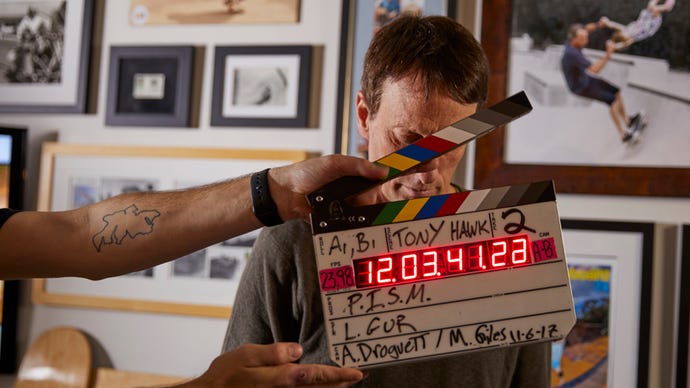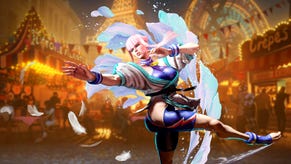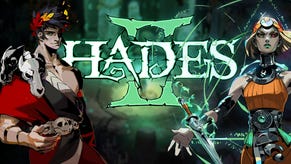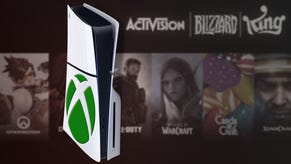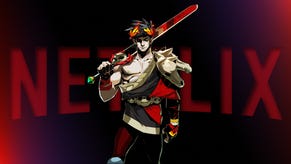How Documentaries Are Helping Preserve Gaming Culture We're at Risk of Losing
USgamer spoke with six filmmakers about their work and how it makes gaming history accessible to viewers.
This article first appeared on USgamer, a partner publication of VG247. Some content, such as this article, has been migrated to VG247 for posterity after USgamer's closure - but it has not been edited or further vetted by the VG247 team.
"History isn't intended to create a one-to-one representation of the world." That's something Laine Nooney, New York University professor and expert on the history of Sierra On-Line, told USgamer for a recent piece on video game preservation. The thrust of Nooney's work, and of the work of the other preservationists and curators interviewed for that piece, revolves around things that the people who make and play games have left behind—not just games and the hardware they're played on, but design documents, marketing materials, personal effects.
While working on that piece, a relevant interview opportunity at PAX East 2020 landed in my inbox. Though I didn't know it at the time, the question of how we hold onto video game culture was about to get a lot more pressing. Over the past few months, I've spoken with six filmmakers about documentary projects that capture gaming history from various angles and scopes. From the embedded YouTube development documentaries of Noclip, to feature films like Pretending I'm a Superman, these filmmakers have not only captured stories about games, developers, and subcultures, but together their work may inform a future record of what gaming culture at-large was like in a pre-pandemic world.
Even setting aside the potentially world-changing moment we're in, these projects come about following periods of innovation and upheaval for both video games and filmmaking. Digital distribution has altered both mediums, simultaneously democratizing them and opening up new kinds of history-keeping difficulties. As gaming has continued to grow in popularity and the generation that initially embraced it reaches middle age, the still-uninitiated may also come across these newer documentaries—ones that don't treat game as just a niche hobby, but as a beloved medium worthy of more nuanced depictions.
No Longer a "Commercial Nothing"
Philip Shane is a prolific documentarian, with a filmography that stretches back to the early '90s. Over the years, Shane has produced, directed, written, or edited (sometimes all of the above) on projects covering all kinds of subjects: the life of Albert Einstein, Ted Koppel's Iraq War journal, the music of Paul and Linda McCartney's Wings, puppeteering in Sundance jury award winner Being Elmo. Now, Shane is working on a documentary about a game that shook the world as he was still editing docs for TV: Cyan's Myst.
Myst, Shane tells me in a quiet conference room at PAX East 2020, was for him "as mind-blowing as Star Wars had been for movies." His in-production project, simply called The MYST Documentary, started back in 2016 thanks to a conversation he struck up with Cyan founders Rand and Robyn Miller. They came to Brooklyn, New York for a talk, which Shane attended just because he wanted to meet them.
"They were amazing, humble, sweet, and passionate, all that," Shane says of the impromptu meeting that led to The MYST Documentary. "I thought for sure somebody had made a documentary by now, after all these years, right? They said no."
As one of the most successful and influential video games of all time, Myst has of course been covered and analyzed by numerous creators, often with the Millers' input. Shane tells me he was there the day Rand sat down for an interview with Ars Technica, capturing footage of them filming their mini-doc. Shane's aim is to do for Myst what little contemporary coverage of its takeoff even gestured at: treating it seriously.
"I think computer history is very important, and within that video game history is even more rare," Shane says. "In film school you learn about the history of film, and how it went through this whole thing—it was regarded as a commercial nothing, silly entertainment, until eventually these hippies in France in the '60s decided it was worth it, that Jerry Lewis was a genius, and so forth."
A similar sentiment, shared by many who love games and universally, you'd assume, amongst anyone who devotes time to making films about them, is arguably fresh and new in the documentary world.
"I feel like so many video game documentaries prior to this decade were kind of poking fun, intentional or not, at the most passionate members of the video game community," says Kevin J. James, director, producer, and editor of Not For Resale, a documentary focused on independent game stores during the rise of digital storefronts. "I think with things like Noclip or films like The Lost Arcade, or Insert Coin, I think we're finally getting to the point where video game culture isn't one umbrella. That'd be like saying 'oh, I made a documentary about sports, it's about all sports.'"
While 2012's lauded and influential Indie Game: The Movie followed four creators, more of today's game documentary work seeks to focus on narrower fields or individual games. Instead of casting a wide net in the hopes of mass appeal, the projects connect their topics to broader context when it helps hone the story.
Danny O'Dwyer, former GameSpot journalist and founder of Noclip, echoes James on the dated trend of going too general. "If you were to make a documentary about food, it would generally be about a specific cuisine, or a specific chef, or the history of a certain type of food," says Dwyer. "You never hear of people making a documentary about all food. 'From Pong all the way to Fortnite' [is] just so stupidly broad."
"I'm glad we're finally there," James says, "because these documentaries we're talking about are so dissimilar."
Getting Older All the Time
Even focused on the arc of an individual game or series, the more influential the subject matter, the more a documentary might have to tread beyond games culture. Staying just in the realm of games would tell an incomplete version of the story.
D'Amato Productions' Pretending I'm a Superman charts the creation and influence of the Tony Hawk's Pro Skater franchise, following how skate culture influenced the game and vice versa after its release. "Initially, I was more of a mind of just doing a documentary that focused only on the game," says Ralph D'Amato, former Neversoft developer and producer of the film.
Ultimately, D'Amato says the film's director Ludvig Gür pushed to "provide more of a history lesson," which was facilitated in part by how eager folks were to discuss Pro Skater's creation and legacy. "With the bands, I didn't have contact info for them, so I just went to where their 'info@' on their webpage was," says D'Amato. "That's how I got Feldy [singer/guitarist John Feldmann], and it helps that the topic is such a huge positive for what Goldfinger went through, so these people are a bit more apt to talk to you."
Getting a documentary project off the ground, even if it starts with just one person talking, can lead to more folks coming out of the woodwork. Mother to Earth, an upcoming film about the localization of Mother (known in the U.S. as EarthBound Beginnings), started thanks to a base of thorough research and a single, roughly shot interview with localization producer Phil Sandhop.
Originally shot by director and producer Bones (a.k.a. J. Bone Christian) for an online retrospective project that fizzled out, they realized the interview should go somewhere. Knowing they had something great on their hands, Bones approached Christian Deitering, who wasn't even a fan of Mother at the time. "Phil, in this 45 minute interview, is answering questions that people have been asking on the [EarthBound] forums for 10 years," says Deitering, now producer and videographer on the film. "Bit rot, how prototypes were made internally, and he's just spouting all this information that nobody knows. I was like 'oh my God, dude, I think you guys got something here.' If you can get these people to go on camera, I like what I'm seeing. Let's pursue this."
"It just kept getting better," Deitering adds. Mother to Earth went on to land an interview with Keiichi Suzuki, one of EarthBound's composers, that necessitated a trip to Japan.
Seeing developers eager to share is something O'Dwyer is now well familiar with. "When it comes to the developers themselves, they want all this s**t out there," he says, adding that the sentiment especially applies to canceled projects. "I can't imagine, as a creative person, having worked on something for that long and then for it never to have been seen. Did you work on anything? Did it ever exist? What was the point?" O'Dwyer thinks studios have gotten a bit more open to letting people see how their games are made, or at least letting Noclip do it since its output of short documentaries has been so consistent in quality since the channel's launch in 2016.
"I think we fill a particular role within all this which is kind of hard to fill," O'Dwyer says. "Myself and Jeremy Jayne, who films and colors all our stuff, it's basically been the two of us for three and a half years making these things. We're well-funded, and we're able to do a lot with just the two of us." O'Dwyer credits his early days at GameSpot's London office, a "fantastic incubator of young talent," for helping him develop the skills to shoot, write, and edit so quickly.
Making a feature length documentary is something O'Dwyer has interest in doing someday, but it isn't in the cards for Noclip. "I kind of feel, in a way, Noclip has a responsibility, because we're in a position where we're able to do this where other creators might not have the notoriety or audience, or most big game websites don't have the time to invest solely in this type of work," O'Dwyer explains. "I think, when I started, I just wanted to make videos that I found interesting about game development, and I think that sort of what's happened. [...] [N]ow we have this responsibility to try and document as much as we can, without losing quality."
Would it be feasible for Noclip to pivot its operation to a feature project? Potentially, but such a project could take years. Mother to Earth launched its Kickstarter campaign in 2016, the same year Gür and D'Amato teamed up for Pretending I'm a Superman, and when Philip Shane met the Miller brothers. Shane hopes The MYST Documentary will debut near Myst's 30th anniversary in 2023.
Timing is a tricky thing for feature-length documentaries, too. Not only does it matter whether the people behind the given subject are still alive—Bones notes we're starting to lose folks crucial to the NES era—but the people behind a documentary need the right amount of time and money to sink into the project. "I could do it at the age of 30," says Kevin J. James of Not For Resale, "and maybe in 10-20 years there's no way I'd be able to put aside that much time and that much money to drive from the East Coast to the West, up to Canada, visit all these stores and actually get an accurate shot of the United States, versus going to three towns and claiming it was nationwide. Age definitely factored in there."
Like Capturing "Rays of Light" That Connect the World
When Myst sent the gaming-curious out in droves to pick up their first CD-ROM drives, it would've been much harder for someone to dig up information on how the game came to be. If they did, they'd be lucky to find something that both gave the achievements of Myst the respect they deserve without also over-emphasizing the Millers. "I've never liked the idea of the lone genius, or the lone two brother geniuses," Shane says. "Everything is a collaboration. I love the connections between people and technologies."
For most documentary work on games today, whether it's a feature length take on a subject covered by numerous YouTube channels, or a web short adding to a sea of interviews and reporting, there's pre-existing material to either affirm, rebuke, or fill in the gaps. No matter how much footage has been collected, this is also where the impossibility of the one-to-one representation of history comes into clear focus—you can easily imagine a documentary about Hideo Kojima that's full of rich, factual, information that nonetheless feeds into the idea that he's a lone auteur. The truth for most games, even ones made by small teams or an individual, probably looks more collaborative or like a network.
That, Shane hopes, will come through in The MYST Documentary, which he says will also highlight the work of Cyan members like Chuck Carter and connect Myst to the inputs and outputs of its creation. "I just see things coming out of Silicon Valley and coming out of Japan, almost like lines of light," says Shane, all directed at Cyan's first headquarters (a mobile home) in Spokane, Washington. Then, after Myst, "we go out to meet some of the fans, if you can imagine rays of light coming out of Spokane and going all around the world."
As stirring as that image is, it also points to how much information there is to capture, and at how much we'll "lose" as time goes on. For any act of preservation, and perhaps especially documentary work, that's maybe not worth getting too hung up on. "If we go in with the idea of trying to preserve 'games history,' we're going to fail," O'Dwyer says. "In a way, it's not like films in the twenties that have all disappeared, or music recorded in the late 19th century. It's so much bigger [and] everyone's own personal story is different too."
O'Dwyer grew up in Ireland with an Amiga, quite a different start in gaming to many of his American peers, who probably grew up with the NES. If you tally up the minutes, Noclip has likely produced more published documentary work on games than the rest of the filmmakers interviewed here combined, but for O'Dwyer it still feels personal. "In many ways, I feel like Noclip is preserving a slice of games history that is relevant to me and my peers—I don't even know if in 20 years anyone is going to care about any of this," he says. "You're trying to preserve the importance of nostalgia, telling yourself 'this is important to me.'"
Still, as acts of or as an impetus for making history, documentaries can add to our understanding of their subjects in ways that few other acts of preservation can. Whether for posterity, or just out of a desire to set the record straight, documentary work can be like a magnet for new or refined information.
"There are some other skate documentaries, and we touch on this, that [say] the whole 900 that Tony did was sort of a planned thing," D'Amato recounts. "That he would do it there, and it would launch this video game series—but the game had been happening with Tony for a year or two years before that even happened, so we kind of squash that."
D'Amato also says Pretending I'm a Superman is honest about what was riding on Tony Hawk Pro Skater's development: "The bar [at Activision] was set super low. Based on what the development team did and how we responded to the skaters, it became this phenomenon."
For Not For Resale, telling the story of small game stores and the shift to digital actually meant resisting the urge to present a "finished" story for the sake of the film's narrative. "We struggled when we realized 'oh, this story doesn't really end,'" James says. "Right when we got into the throes of post-production, the question became 'are the next video game consoles even going to have optical media drives, or is it just going to be digital only?' We had to start to steer our editing process toward 'we need to treat this like a vertical slice of time.'"
Other filmmakers gave both James and the team behind Mother to Earth feedback suggesting they heighten the drama in spots, nudging them to follow a sort of pattern common to many documentaries. Both resisted. Not every documentary needs to be The King of Kong, and many can excel—especially when it comes to preservation—just by talking to right people and asking the right questions, with no false veneers of drama made for pacing.
Take, for instance, the story of the smoking Crows from Mother. "When we talked to Phil Sandhop, he casually mentioned that there's a rule in California that said video games can't show anybody smoking," says Deitering. "I mentioned that to Frank Cifaldi [of the Video Game History Foundation], and he was like 'I've never heard that before.' Then we went and contacted the State of California law library, and they found the statute. That's in the movie, as 'here is why the crow changed.' That hadn't been found before."
If you're not a Mother fan, just Google "smoking crow" and you'll see how much players have fixated on that change for years. This stuff does matter to people, and in this case, were it not for the existence of this documentary, the true explanation may have eluded us forever. For the sake of game history and preservation, it's absolutely a win that more people are empowered to do documentary work these days, be it feature-length or online, and the more granular the subject matter of each project, the fuller the picture we have of the medium's impact and development.
As we enter a new generation of consoles and face an uncertain future for the world at large—one where gaming and digital entertainment may very well take an even bigger role in our lives—that "rays of light" metaphor really hits home. We can't "save" all gaming history, but it's reassuring to see the energy that's coalesced in the documentary space. Whether more fannish or studied in tone, these projects are essential acts of preservation, and part of their usefulness stems from their grounding in the unabashed love for the subject matter.
"Preservation for entertainment is just a buttoned-down version of fandom," O'Dwyer suggests. "People just want to nerd-out on the stuff they like, at least when the people are still alive who experienced it at the start."
